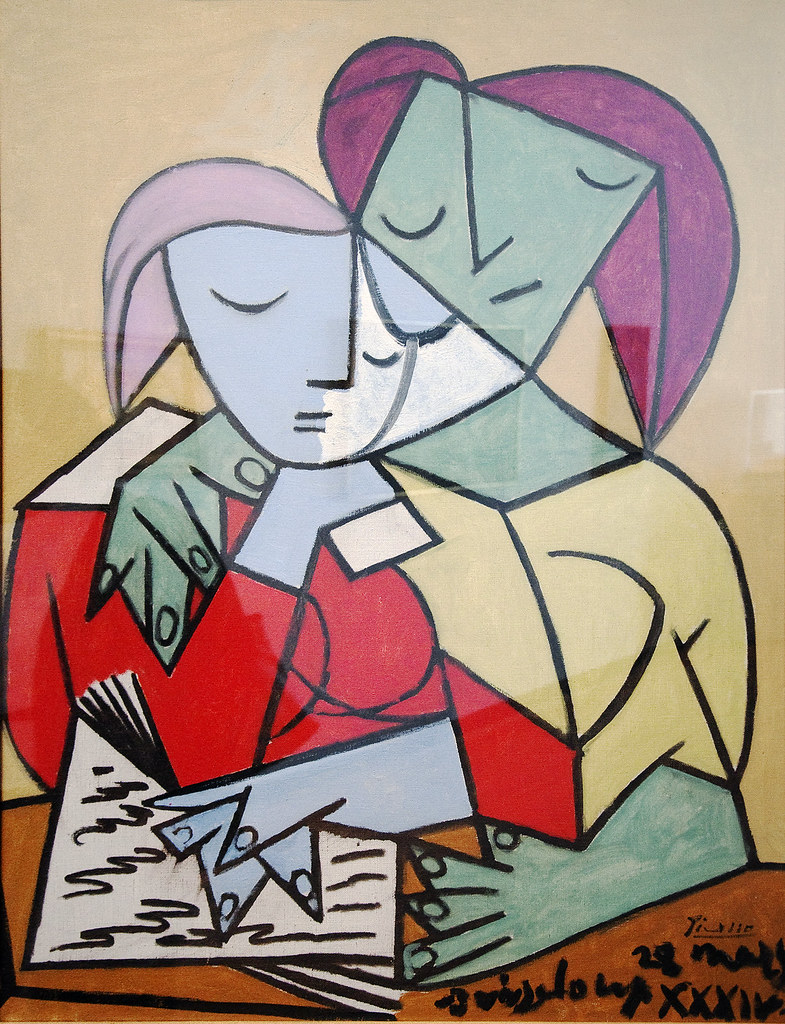Who was Artist Pablo Picasso?
Pablo Picasso was a well-known and prolific artist who made significant advances in modern art. Picasso’s participation in the Cubist movement was a major factor in the development of contemporary art. He co-founded Cubism, a revolutionary art style that challenged conventional ideas of perspective and representation, with Georges Braque. This method significantly influenced how art developed in the 20th century.
Throughout his multi-decade career, Picasso showed a fantastic capacity to both master and transcend a wide range of artistic genres. Picasso continuously reinterpreted his creative language from his early Blue and Rose Periods to the emergence of Cubism and Surrealism to his later, more expressive works. Picasso was renowned for pushing the limits of depiction and conventional artistic conventions. His paintings frequently incorporated abstract elements, fractured perspectives, and warped forms, promoting fresh art viewing and interpretation approaches.
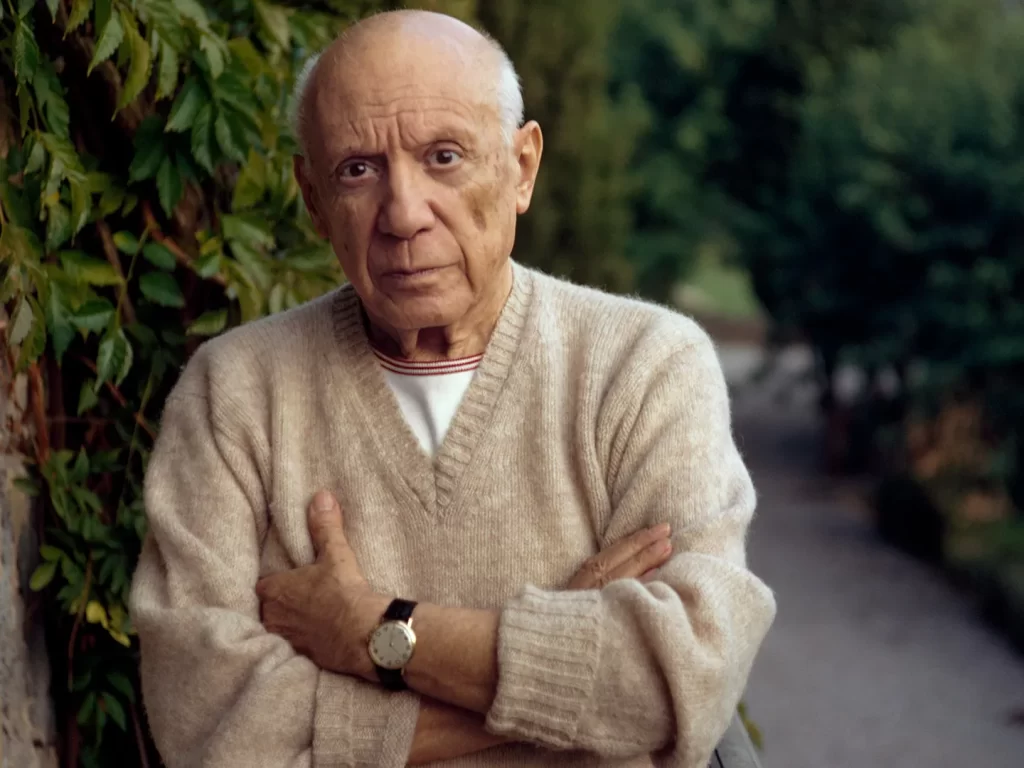
His broad range of abilities and experimentation with various media enhanced his overall influence on the art world. Picasso’s responses to social, political, and personal events are reflected in several of his paintings, rich in symbolic connotations. A potent statement against war, “Guernica” is regarded as one of the most famous pictures of the 20th century.
Top 9 Picasso Famous Paintings
All of Pablo Picasso’s paintings are masterpieces in their own right. Today, we present an exhaustive list of the artist’s 10 popular paintings.
1. Les Demoiselles d’Avignon
Pablo Picasso produced the revolutionary artwork Les Demoiselles d’Avignon in 1907. It is mainly linked to the Cubist style and is regarded as a foundational piece in the evolution of modern art. Les Demoiselles d’Avignon is a groundbreaking piece that deviated from conventional artistic practice. The picture is an early example of cubism. The painting shows five nude female figures in a brothel. Sharp angles, geometric shapes, and distorted proportions define their body. Picasso’s interest in non-Western art is evident in the faces, featuring influences from Africa and Iberia.
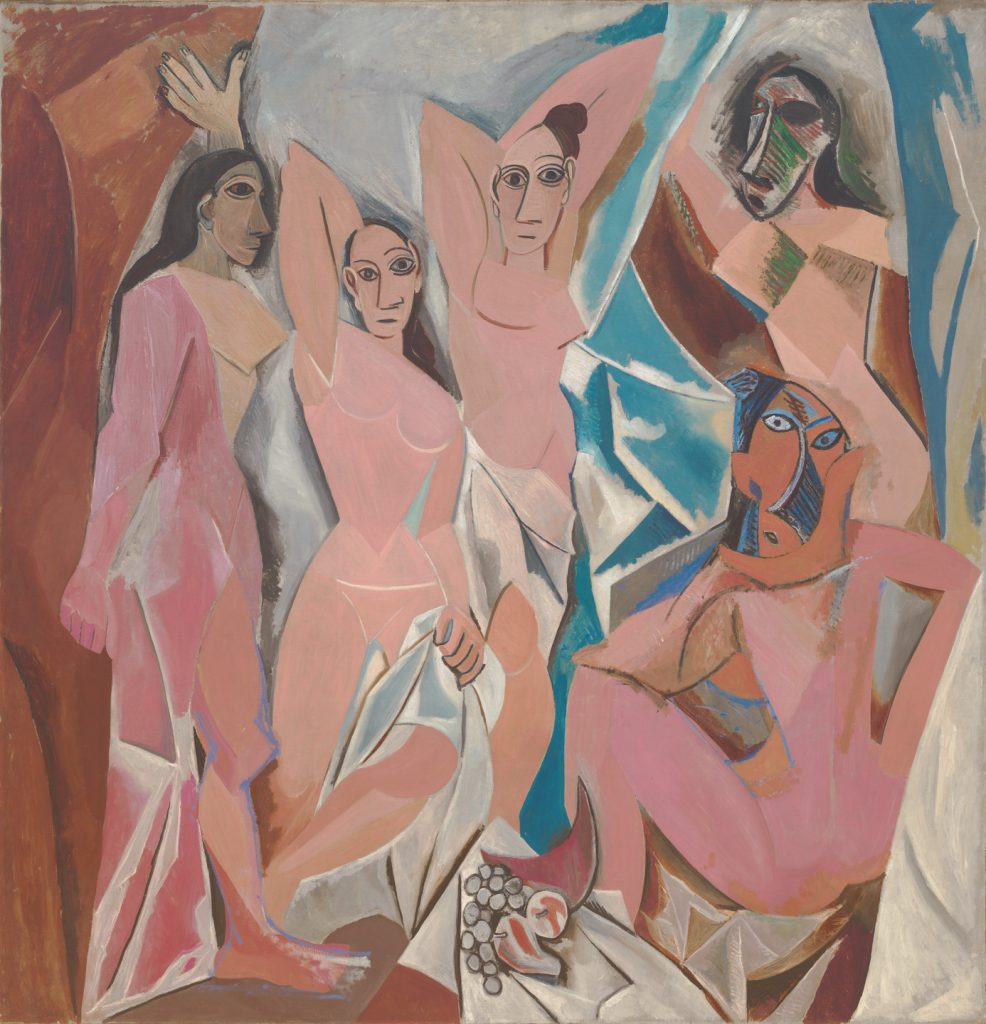
Courtesy – MoMA
2. Guernica
Pablo Picasso’s Guernica (1937) is among his most well-known and significant works of art. It was a reaction to the Guernica bombing during the Spanish Civil War. Guernica is a powerful protest against war. Picasso painted the scene to convey his fury and despair at the carnage and brutality of war, especially the suffering caused to people.
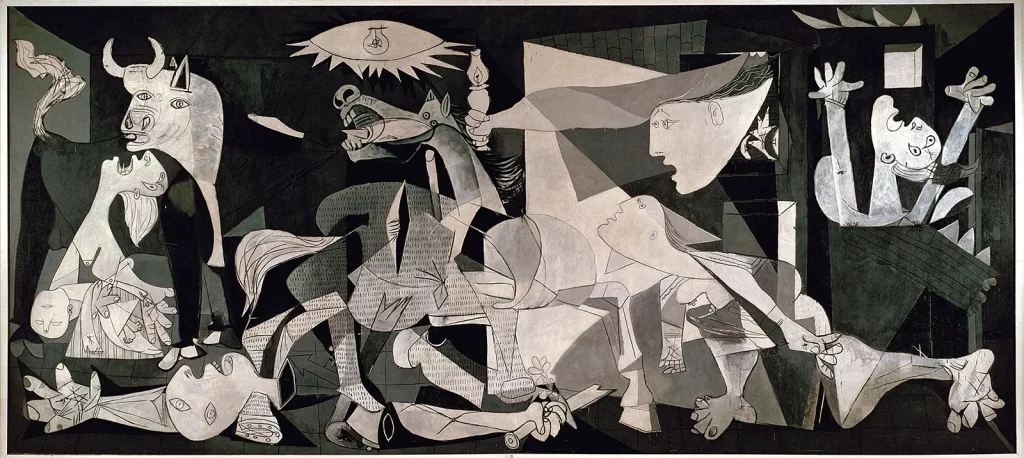
Courtesy – Britannica
3. The Weeping Woman
Pablo Picasso painted a sequence of paintings known as The Weeping Woman in 1937. The series is renowned for its vivid and poignant depiction of a troubled woman. In the painting, a woman appears to be crying or grieving. Tears run down the woman’s face, which is frequently twisted in agony. The Weeping Woman, like Guernica, is a reaction to the horrors and agony of the Spanish Civil War (1936-1939). Picasso’s profound empathy for the victims of war and the effects of violence on people is evident in the works.
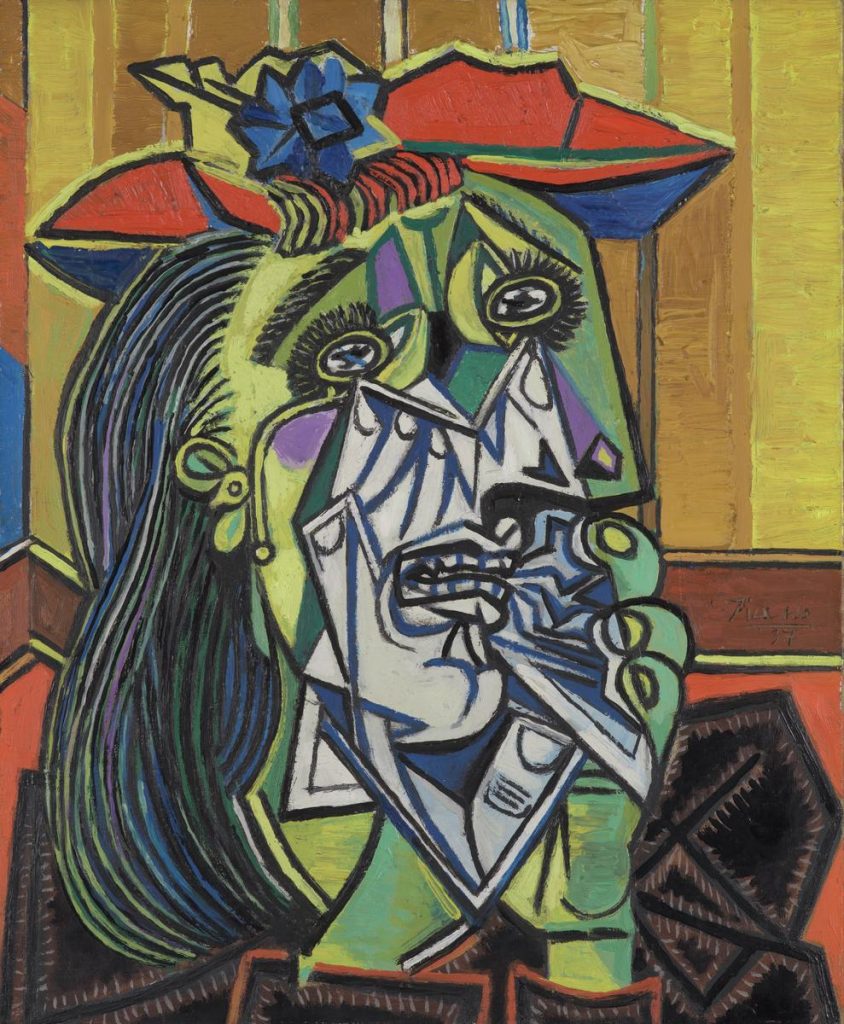
Courtesy – Tate
4. The Old Guitarist
Pablo Picasso produced The Old Guitarist, in 1903 as part of his Blue Period. Picasso’s dark and depressing paintings from this era frequently feature themes of poverty, loneliness, and sorrow. Picasso’s Blue Period, which spanned 1901 to 1904, is distinguished by a primarily blue colour scheme. Picasso was significantly impacted by the poverty he saw around him and the suicide of his close friend, Carlos Casagemas, at this time. In The Old Guitarist, an old blind guy is shown stooped down and strumming a guitar. The gaunt figure evokes a sense of deprivation and misery. The picture gains a cultural touch from the guitar, which is frequently connected to Spanish culture.
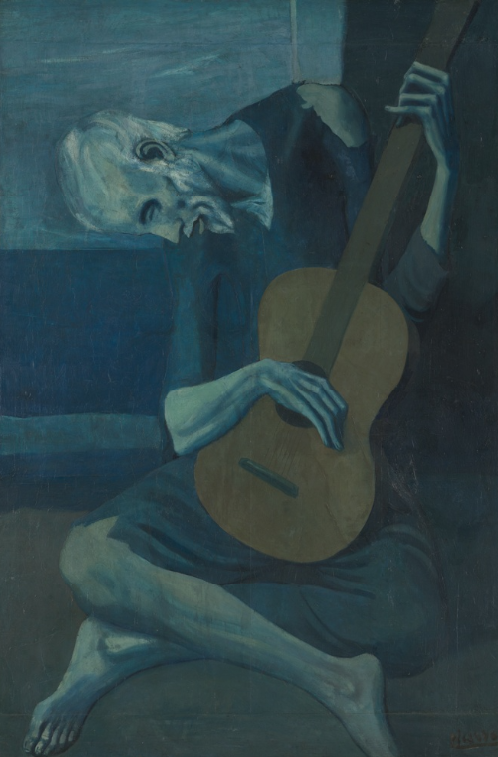
Courtesy – The Art Institute of Chicago
5. La Vie
Pablo Picasso produced La Vie in 1903 when he transitioned from the Blue Period’s sombre tones to the Rose Period’s warmer hues. The artist portrays three characters. A youngster is holding a blue dove to the right of the picture, while a standing, nude guy is embracing a woman who is kneeling in the centre. The piece alludes to family, love, and the passing of time.
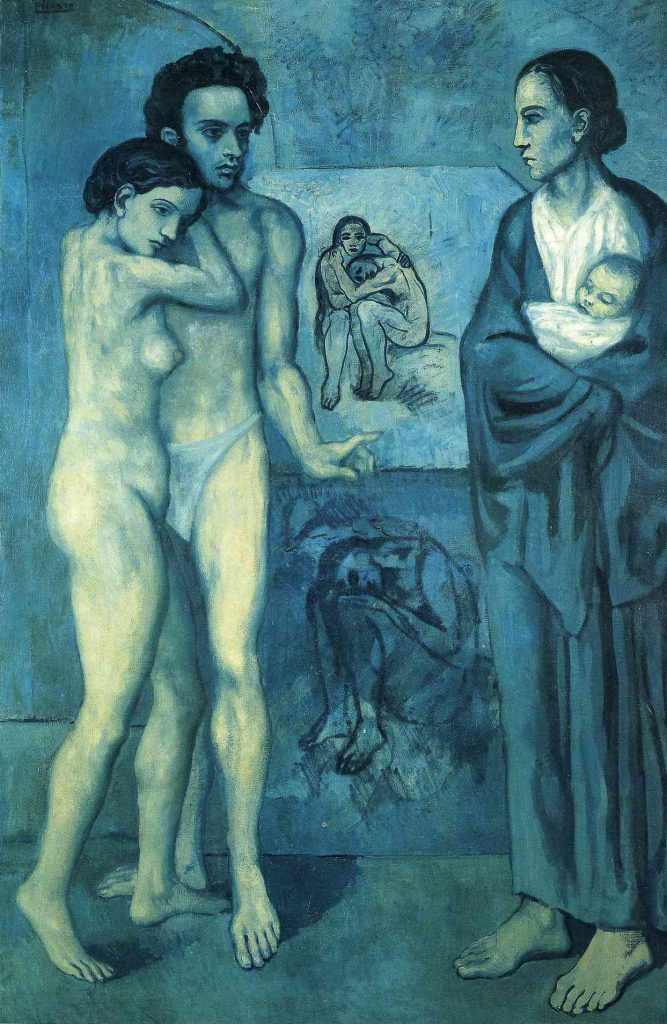
Courtesy – Art History Project
6. Girl Before a Mirror
Pablo Picasso produced The Girl Before a Mirror in 1932, during the height of his Surrealist movement. This era was marked by a break from rigorous representation and a concern with fanciful and surreal imagery. A woman gazes at her reflection in a mirror. The woman’s mirror is warped, giving the viewer a different impression of her appearance. The dual portrayal alludes to the duality of identity, the concept of inner and exterior selves, or the various dimensions of personality. The vivid and striking colour scheme of Girl Before a Mirror includes contrasting hues, including reds, yellows, and greens. The painting’s emotional intensity and metaphorical richness are enhanced by the use of colour.
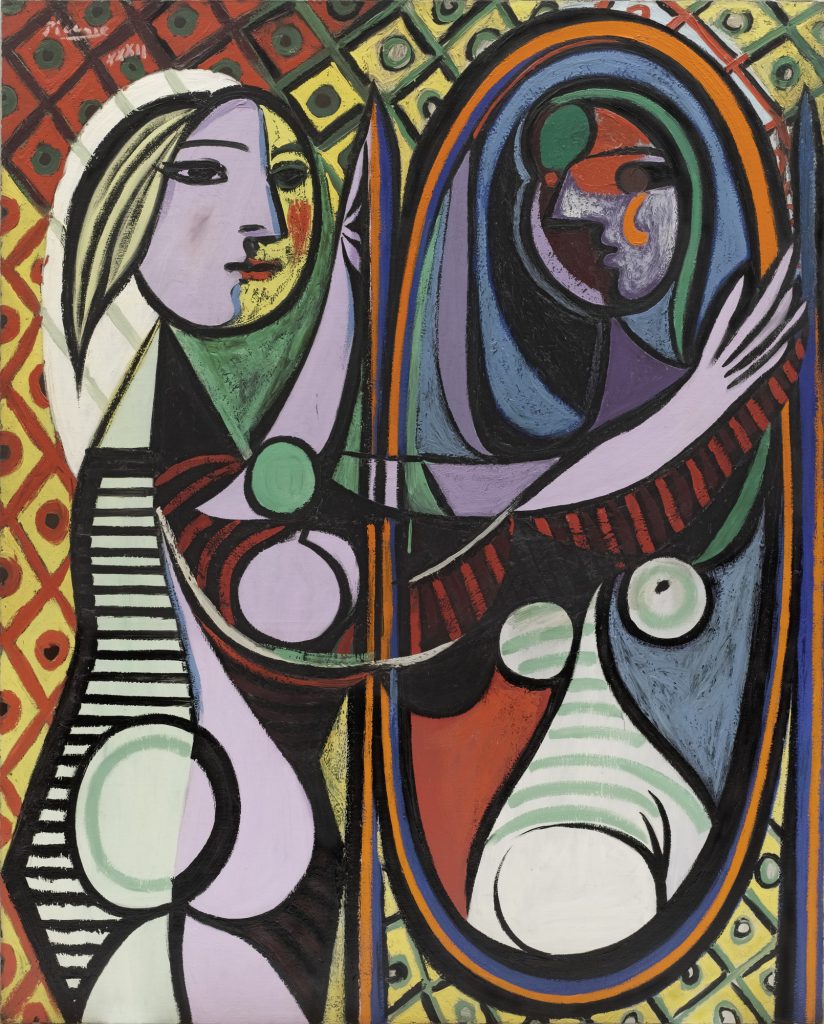
Courtesy – MoMA
7. Ma Jolie
Pablo Picasso produced Ma Jolie between 1911 and 1912 as part of his Cubist movement. In English, “Ma Jolie” means “My Pretty.” The title conveys a sentimental and intimate tone. Picasso painted Ma Jolie at the height of the Cubism. In the painting, you’ll notice disassembling and reassembling figures and objects from several angles.
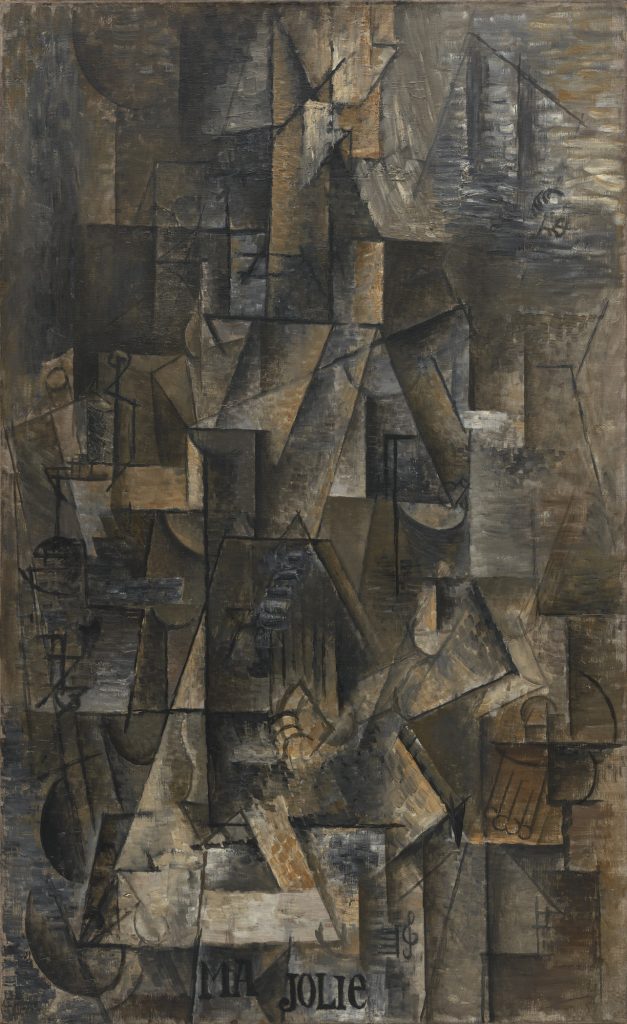
Courtesy – MoMA
8. Portrait of Dora Maar
Pablo Picasso painted Portrait of Dora Maar in 1937. The artwork depicts artist, poet, and photographer Dora Maar. Maar served as Picasso’s model for many of his paintings and was one of his most well-known and well-documented mistresses. Picasso painted Portrait of Dora Maar during his engagement with Maar and the Spanish Civil War. The picture reflects the era’s emotional turbulence and intensity.
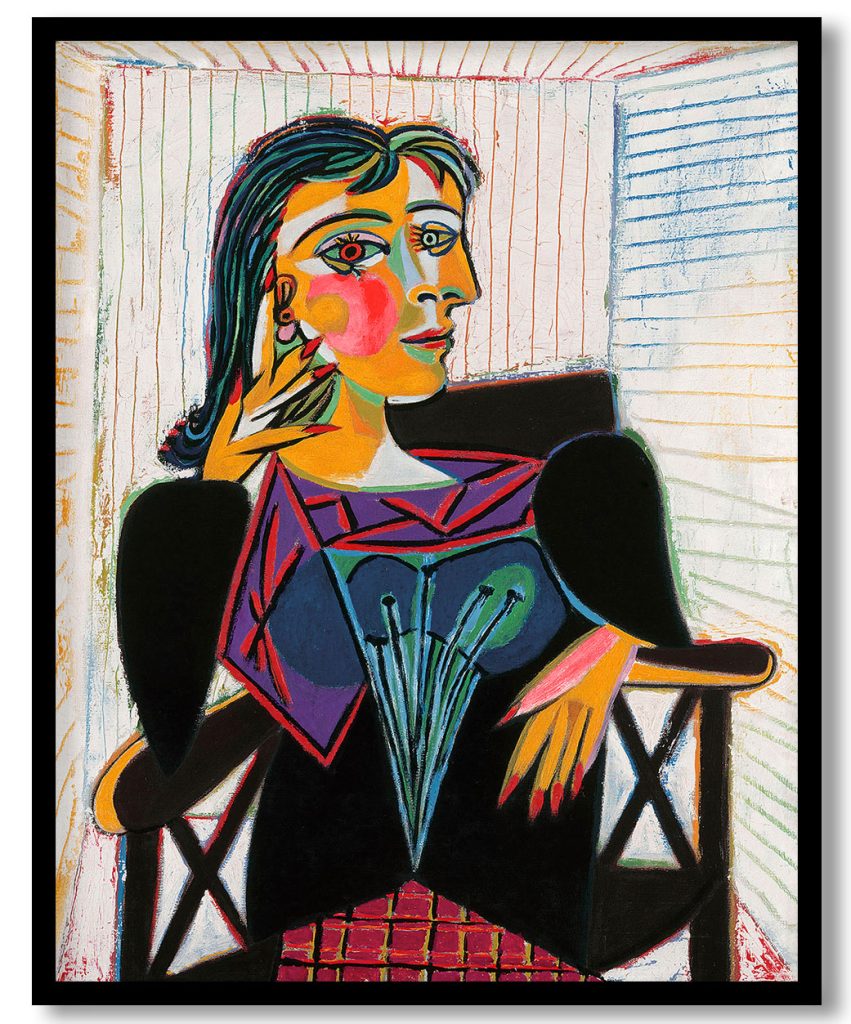
Courtesy – Best of Bharat
9. Large Nude on a Red Armchair
Pablo Picasso’s influential work, Large Nude on a Red Armchair, was produced in 1929. It is a surrealist painting which investigates the subconscious and irrational parts of the human psyche. As the title suggests, the painting depicts a reclining, nude woman in a red armchair. Picasso experimented with various formal and thematic possibilities.
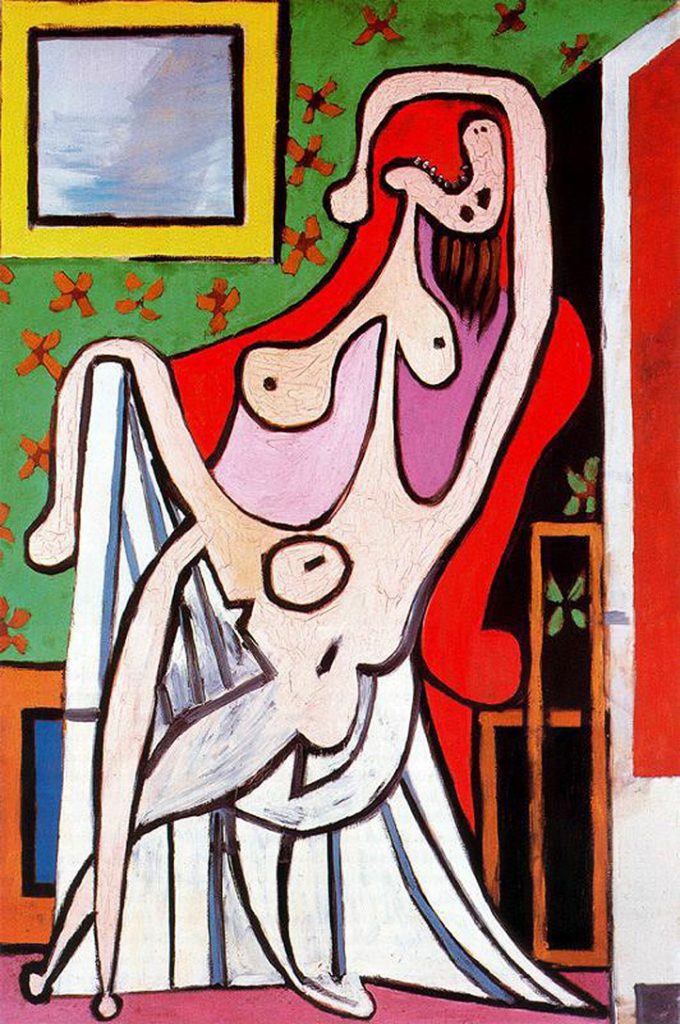
Courtesy – Artchive
Image – Two Girls Reading Courtesy – Flickr

